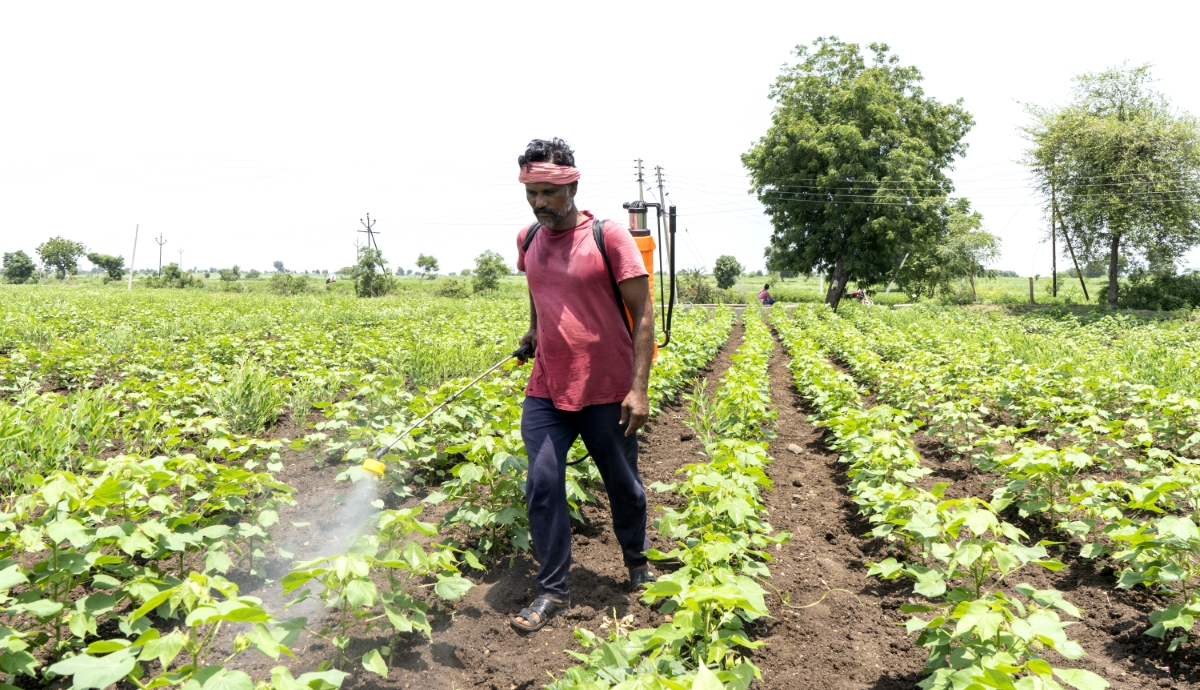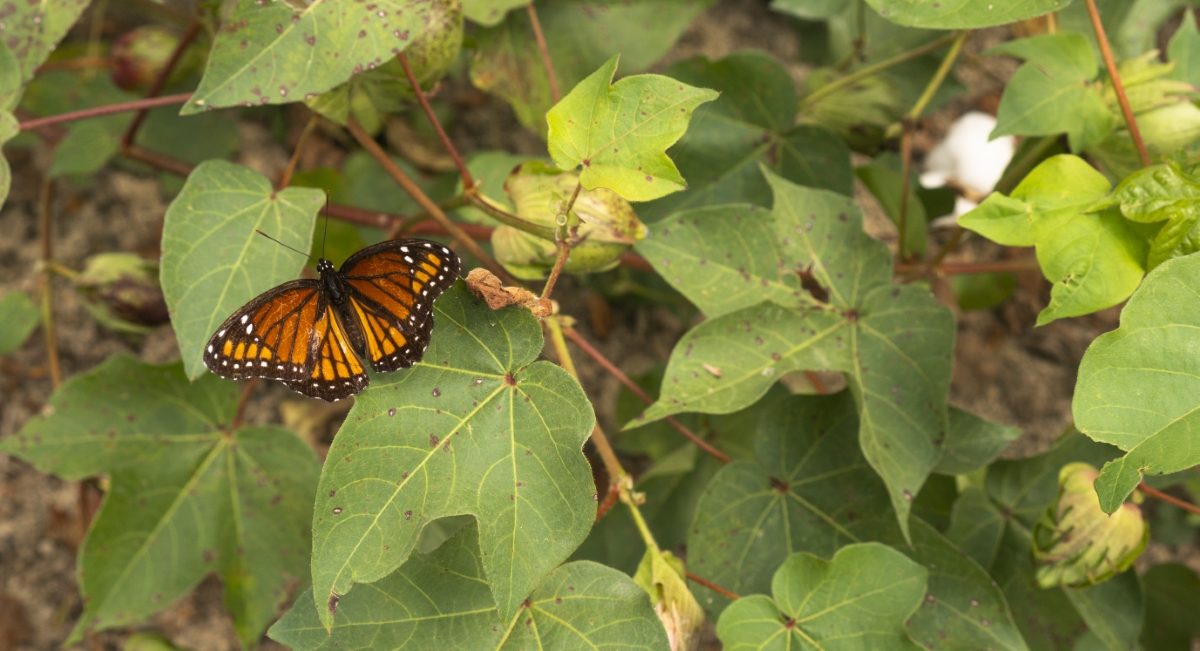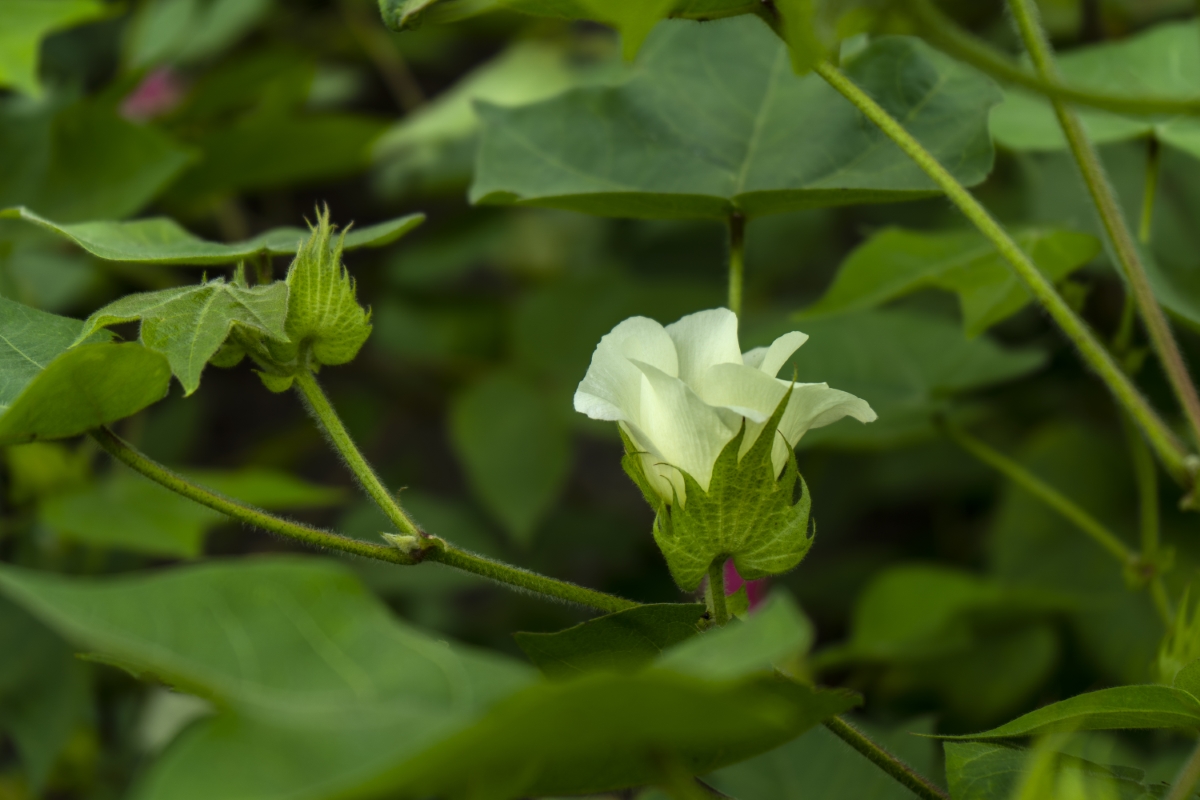Cotton leaf curl disease (CLCuD) is a viral infection that targets cotton and other vulnerable host plants. Once infected, the first signs of trouble appear on the upper soft leaves. They begin to curl upwards, creating a distinct visual cue for farmers and gardeners alike. Farmers can take proactive measures to manage cotton leaf curl disease and minimize its impact on their crops’ health and productivity.

Natural and Organic Ways to Treat Cotton Leaf Curl
Symptoms of Cotton Leaf Curl
The most noticeable symptom of cotton leaf curl is the upward curling of leaves. This curling may be accompanied by a thickening of small veins, giving the affected leaves a distorted appearance. As the disease progresses, more and more leaves will exhibit these characteristic symptoms. Preventing and treating the Cotton Leaf Curl Virus in cotton plants is crucial for maintaining a healthy crop.
In addition to leaf curling, infected plants often show stunted growth and reduced vigor. The plant’s overall size may remain small, with fewer flowers and buds forming. This can significantly impact yield potential and economic losses for farmers. Through careful monitoring of environmental conditions and adherence to proper planting practices, mitigating some of these risk factors and protecting cotton yields from this devastating viral infection is possible.
Natural and Organic Treatments for Cotton Leaf Curl Virus
One natural remedy is garlic extract. Garlic has potent antiviral properties that can help combat the virus. To make a garlic extract spray, crush a few cloves of garlic and soak them in water overnight. Then strain the mixture and dilute it with more water before spraying it onto the infected plants. Organic insecticides like pyrethrin or spinosad can also effectively control whitefly populations, which transmit the disease. These insecticides should be applied according to their instructions for best results.
In case you missed it: Natural and Organic Ways to Treat Pumpkin Leaf Curl: Fix With Effective Home Remedies

Additionally, practicing good crop management techniques such as promptly removing infected plant material, and promoting overall plant health through adequate nutrition can also help reduce the severity of Cotton Leaf Curl Virus infection. Encouraging beneficial insects like ladybugs or lacewings into your garden can help control whitefly populations naturally. Intercropping cotton with other plants that repel whiteflies, such as marigolds or basil, can help reduce their numbers naturally.
Step-By-Step Guide to Treating Cotton Leaf Curl Virus
- Identify the Symptoms: The first step in treating cotton leaf curl virus is correctly identifying the disease’s symptoms. Look for curled leaves, thickened veins, stunted growth, and no flowers or buds on your cotton plants.
- Remove Infected Plants: Once you have identified infected plants, removing them from your field immediately is essential. This help to prevent further spread of the virus to healthy plants.
- Control Whitefly Populations: Since whiteflies transmit the virus, it is crucial to control their populations effectively. Use sticky traps and insecticides specifically designed for whitefly control.
- Implement Cultural Practices: Good cultural practices can also help manage the cotton leaf curl virus. Ensure proper irrigation and drainage systems, maintain weed-free fields, and practice crop rotation with non-host crops.
- Apply Organic Remedies: Consider using organic remedies such as neem oil or garlic spray to deter whiteflies and reduce viral infections naturally.
Home Remedies for Controlling Cotton Leaf Curl Virus
Garlic Spray: Crush a few garlic cloves and steep them in water overnight. Strain the mixture and use it as a foliar spray on infected plants. The strong smell of garlic acts as a deterrent for pests like whiteflies.
Tomato Leaf Spray: Blend tomato leaves with water to create a liquid solution and apply it to affected plants using a sprayer or sponge. Tomato leaves contain alkaloids that have insecticidal properties.
Companion Planting: Intercropping cotton with repellent plants such as marigolds, basil, or mint can help deter whiteflies naturally.
Best Practices for Managing Cotton Leaf Curl Virus
- Regularly check your crops for any signs of leaf curling or discoloration. The sooner you identify the virus, the better your chance of taking immediate action.
- Avoid planting cotton near alternative hosts and practice crop rotation to reduce the likelihood of infection spreading. This will disrupt the life cycle of whiteflies, which transmit the virus.
- Keep your fields clean by regularly removing weeds and employing effective weed management practices.
- Start with certified disease-free seeds to ensure healthy plants from the beginning. Transplants should also be inspected thoroughly before planting.
In case you missed it: Natural and Organic Ways to Treat Guava Tree Leaf Curl: Fix with Effective Home Remedies

Preventing and Treating Cotton Leaf Curl Virus in Cotton Plants
- One key step is using certified disease-free seeds to ensure that transplants are healthy. Starting with clean, disease-resistant plants can greatly reduce the likelihood of introducing the virus into your field.
- Controlling whitefly populations is also essential in preventing the spread of CLCuD. These tiny insects act as carriers for the virus, so implementing measures such as insecticide sprays or using sticky traps can help keep their numbers under control.
- Protecting seedlings from whiteflies is especially important, as they are particularly vulnerable to infection. This can be done by covering them with row covers or using physical barriers like mesh netting.
- Maintaining a weed-free field and surroundings is another preventive measure against CLCuD. Weeds can serve as alternative hosts for the virus, allowing it to persist even if cotton plants have been removed.
- Practicing crop rotation by not planting cotton near alternative hosts helps break up pest and disease cycles. By alternating crops in different seasons or years, you disrupt favorable conditions for pathogens like CLCuD.
Herbal Methods to Treat Cotton Leaf Curl Virus
- Neem oil has insecticidal properties and can help control whitefly populations responsible for spreading the virus. Mix neem oil and water and spray them on your cotton plants regularly.
- Garlic contains compounds that act as natural pesticides, helping to repel insects like whiteflies. You can make a garlic spray by crushing and mixing a few cloves with water. Spray this mixture onto your infected plants to deter whiteflies and potentially reduce the spread of the virus.
- A solution from hot pepper or chili powder can help ward off pests like whiteflies while stimulating plant growth. To make this natural pesticide, combine one tablespoon of hot pepper or chili powder with a quart of water and let it steep overnight. Strain out any solids before spraying them onto your cotton plants.
Integrated Pest Management Strategies for Cotton Leaf Curl Virus
Use certified disease-free seeds: Start with healthy, tested, and certified virus-free ones. This will help prevent the introduction of infected plants into your field.
Practice crop rotation: Avoid planting cotton in areas where alternative hosts for the virus are present. Rotating crops with non-host plants can disrupt the lifecycle of whiteflies and reduce their ability to transmit the disease.
Maintain weed-free fields: Weeds can serve as alternate hosts for whiteflies and the cotton leaf curl virus, so keeping your fields free from weeds is essential. Implement proper weed management practices, including regular cultivation, mulching, or herbicide application.
Implement cultural practices: Adopting specific cultural practices can reduce viral transmission and effectively manage cotton leaf curl disease. These include pruning infected plant parts, removing diseased plants promptly, and avoiding excessive nitrogen fertilization that promotes succulent growth attractive to whiteflies.
Consider resistant varieties: Planting genetically resistant varieties is an excellent long-term strategy against cotton leaf curl virus infection if available in your region or through breeding efforts by agricultural research institutions.
In case you missed it: Natural and Organic Ways to Treat Beans Leaf Curl: Fix With Effective Home Remedies

Conclusion
This viral infection, transmitted by the silverleaf whitefly, can cause severe damage to the plant leaves and overall growth. Initially, symptoms appear as upward curling of the leaves and thickening of small veins. As the disease progresses, affected plants become stunted in size and fail to produce flowers or buds. The growth of these plants comes to a sudden halt, leading to a drastic reduction in yield.
- Feed Your Flock for Less: Top 10 Tips to Save on Chicken Feed
- Ultimate Guide to Ossabaw Island Hog: Breeding, Raising, Diet, and Care
- Hatching Answers: The Top 10 Reasons Your Chickens Aren’t Laying Eggs
- Eggs and Economics: Breaking Down the Cost of Raising Backyard Chickens
- Defend Your Greens: Proven Methods to Keep Iguanas Out of Your Garden
- Ultimate Guide to Cinnamon Queen Chicken: A Comprehensive Guide for Beginners
- Ultimate Guide to California Tan Chicken: Breeding, Raising, Diet, Egg-Production and Care
- Ultimate Guide to Marsh Daisy Chicken: Breeding, Raising, Diet, and Care
- 10 Types of Chicken Farming Businesses You Can Start for Profits